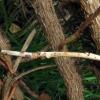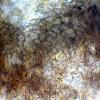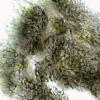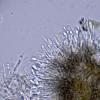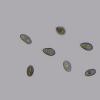
15-12-2025 15:48
 Danny Newman
Danny Newman
Melanospora cf. lagenaria on old, rotting, fallen

15-12-2025 15:54
 Johan Boonefaes
Johan Boonefaes
Unknown anamorph found on the ground in coastal sa

15-12-2025 21:11
 Hardware Tony
Hardware Tony
Small clavate hairs, negative croziers and IKI bb

15-12-2025 07:09
 Danny Newman
Danny Newman
indet. Rutstroemiaceae sp. on unk. fallen leavesMc

15-12-2025 07:05
 Danny Newman
Danny Newman
Pseudosclerococcum golindoi (det: Zotto)near Cosb

15-12-2025 11:49
 Danny Newman
Danny Newman
ITS sequences from the following two collections B

15-12-2025 12:34
 Danny Newman
Danny Newman
indet. Rhytismataceae on oak leafnear Purchase Roa

09-12-2025 12:06
 Andgelo Mombert
Andgelo Mombert
Bonjour,Je recherche l'article concernant Hypobryo
Pyrenomycete on Hedera
Josep Torres,
03-10-2025 09:43
Hyphae on the peridium and exciple have an angular texture.
Conidiogenous hyphae widen at their bases and gradually taper, ending in more or less pointed shapes, measuring (17.8) 20.7 - 30.2 (30.4) × (1.6) 1.8 - 2.4 (2.6) µm.
These conidiogenous hyphae produce ellipsoidal, hyaline conidia with one or two large lipid droplets inside. Free conidia with brown intracellular pigment were also observed, which could perhaps correspond to mature conidia.
These conidia measure:
(7) 7.6 - 9.29 (9.3) × (3.6) 4.2 - 5.2 (5.7) µm
Q = (1.5) 1.6 - 2 (2.1) ; N = 20
Me = 8.5 × 4.8 µm ; Qe = 1.8
I am fully aware of the difficulty of identifying species like this, but I will not fail to prove it.
This conidiogenesis vaguely reminds me of genera like Diplodia, but the conidia are too small to even be considered a genus.
Any feedback from you would be welcome.
Thank you very much in advance.
Best regards.

